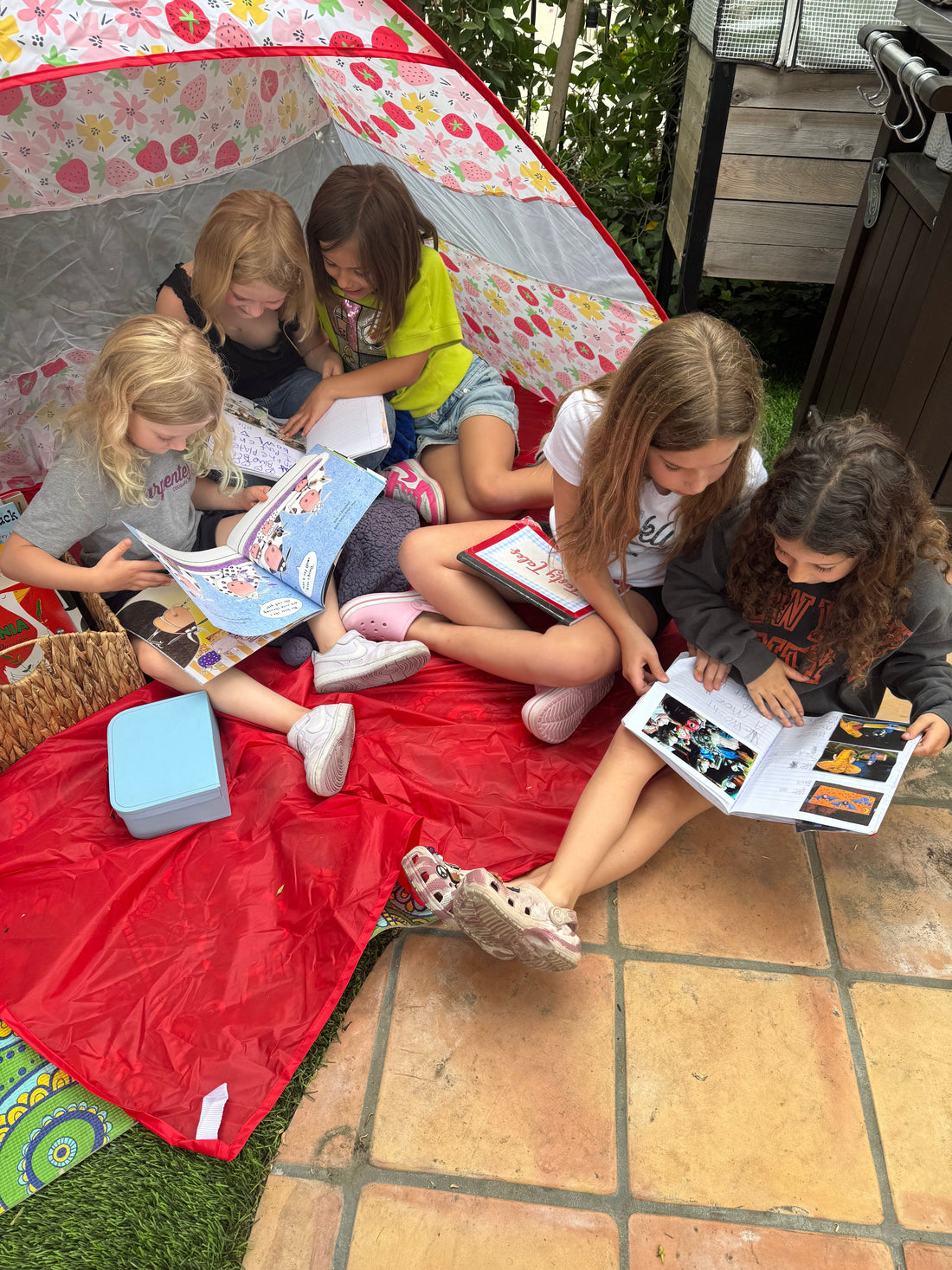
6 Ways to Keep Kids Reading This Summer
Share
Fun, screen-free ideas to prevent the summer slide and spark a love of books.
School’s out, the sun is shining, and your child is ready for adventure. But while summer brings popsicles and pool days, it can also cause a dip in reading progress—commonly called the summer slide. The good news? Keeping your kids reading over summer break doesn’t have to feel like homework. With a little creativity, you can turn reading into something they actually ask for.
Here are six playful, low-pressure summer reading activities for kids that help build literacy skills, spark curiosity, and keep learning fun all season long:
1. Host a Backyard Book Picnic (or a Living Room Fort One!)
There’s nothing like books under the breeze. Lay out a blanket in the backyard—or build a cozy reading fort indoors—and pack a basket full of picture books, chapter books, and snacks. Let your child choose what to read, and don’t forget to bring a book for yourself. When kids see you enjoying a good story, they’re more likely to join in.
Pro tip: Reading outside gives kids a break from screens and a chance to connect books with fun summer memories.
2. Create a Summer Reading Passport
Turn your child into a globe-trotting book explorer with a DIY summer reading passport. Each time they read a new book or try a new genre, they earn a sticker, stamp, or doodle in their passport. Add fun reading challenges like “read in a silly voice” or “read a nonfiction book about animals.” It turns summer reading into an exciting quest!
Boost: great for kids ages 5–10, this idea supports early literacy and builds independent reading habits.
3. Start a Kids’ Summer Book Club
Nothing keeps kids reading like sharing stories with friends. Invite a few neighbors, cousins, or classmates to join your child in a summer book club. Rotate who picks the book each time, and host casual meetups with themed snacks, crafts, or a fun discussion. It’s a great way to promote social-emotional learning, conversation skills, and reading comprehension.
Tip: Look for age-appropriate books with strong characters and fun plots—perfect for readers just starting chapter books.
4. Write Letters to Book Characters
After finishing a story, have your child write a letter to their favorite character—or pretend to get one from them! This activity boosts writing and comprehension while helping them connect more deeply to the story. You can even write a reply as the character for extra fun!
Why it works: This reading extension adds a personal, imaginative layer to storytelling while supporting writing development.
5. Read It—Then Cook It!
Bring stories to life in the kitchen with a little help from Tasty Tales Cooking, a monthly subscription that pairs beautifully illustrated books with kid-friendly recipes. After reading a featured book, try a hands-on recipe inspired by the story—like Hazel’s Perfect Pasta Salad. Cooking with kids builds confidence, introduces basic science and math, and strengthens literacy through real-world experience.
Friendly tip: cooking with kids supports early literacy, sensory learning, and cultural exploration—all in one delicious activity.
6. Let Kids Be the Librarian
Empower your child to “run” their own library. Have them curate a rotating book display at home, create signs or labels, and recommend books to family members. The more ownership they have over what they read, the more excited they’ll be to dive in.
Educational bonus: This kind of pretend play promotes leadership, organization, and book choice confidence.
Bonus Tip: Make It Fun—Not Forced.
The key to summer reading success? Keep it light, playful, and filled with choice. Whether you’re reading for five minutes or fifty, what matters most is that kids feel positive about books.
